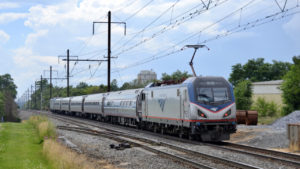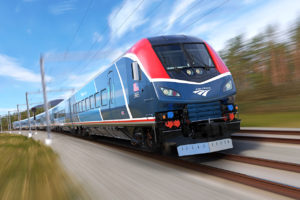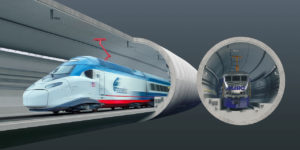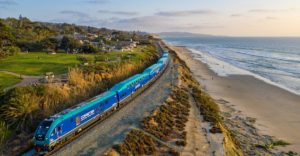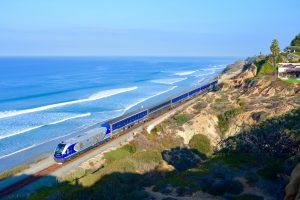SANBAG clears environmental hurdle to move Redlands Passenger Rail forward
Written by Jenifer Nunez, assistant editorThe San Bernardino Associated Governments (SANBAG) received the Notice of Determination (NOD) of its Redlands Passenger Rail Project Final Environmental Impact Statement/Environmental Impact Report (EIS/EIR) in a public hearing and board meeting March 4.
The board determined the report met all review processes required by the California Environmental Quality Act. Having also received the Federal Transit Administration National Environmental Policy Act Record of Decision on Feb. 17, the project is now cleared for final design and construction.
“After years of studying alternatives to reduce San Bernardino County travel congestion, we have approval to move forward on a passenger rail solution that will connect residents and businesses with systems across the state,” said SANBAG Board President L. Dennis Michael. “The project offers a reliable transportation alternative that also improves air quality and supports economic development.”
SANBAG introduced the specific concept of a rail connection between the cities of San Bernardino and Redlands with a 2004 ballot measure to extend the half-cent sales tax for transportation improvements in San Bernardino County. Projected population growth and increased congestion, along with physical barriers like the Santa Ana River and Interstate 10, led SANBAG to look at alternative cost-effective travel options for communities along the Redlands Corridor. The Redlands Passenger Rail Study became a key project for the voters’ consideration.
The EIS/EIR outlines SANBAG’s detailed process of reviewing and eliminating alternatives based on environmental and social impacts. SANBAG studied significant potential effects like land use and planning, air emissions, noise levels, visual aesthetics, floodplains and hydrology. Other transit alternatives, like light rail and bus rapid transit, were removed from consideration due to additional property acquisition requirements and longer travel times.
The Locally Preferred Alternative, as designated by the SANBAG Board, runs along the existing railroad right-of-way from E Street in San Bernardino east to the city of Redlands, roughly a nine-mile extension of passenger rail service ending at the University of Redlands.
Other features of the EIS/EIR Local Preferred Alternative include: passenger rail service of up to 25 average daily trips, connecting to other regional transit modes with access to Los Angeles, employment and shopping centers throughout the Inland Empire and destinations in the San Bernardino Mountains and high desert; majority use of existing SANBAG right-of-way; new track and replacement/retrofit of existing bridges; passenger boarding at four new stations with station stops at five locations (from San Bernardino Transit Center); use of existing train layover and maintenance facility; safety improvements at 22 at-grade crossings, including Quiet Zones (determined by Memorandums of Understanding with the Cities of Redlands and San Bernardino on Feb. 4, 2015); five public at-grade crossings closures for added safety and use of Diesel Multiple Units with Tier 4 emissions technology that are smaller, quieter and more efficient than standard passenger locomotive hauled units.
Funding for the $242-million project is anticipated to come from a combination of local, state and federal sources. These sources include Measure I; State Transit Assistance Funds and Proposition 1B; Federal Congestion Mitigation Air Quality Funds and Federal 5307 and 5309 Grants. In addition, the Redlands Passenger Rail project has private investment for the completion of rail stations.
Next steps include the final design and construction, which could begin as soon as late-2015, with operation in 2018; however, construction and operation schedules may vary based on procurement of rail vehicles, commuter rail service options along the corridor and availability of funding.

